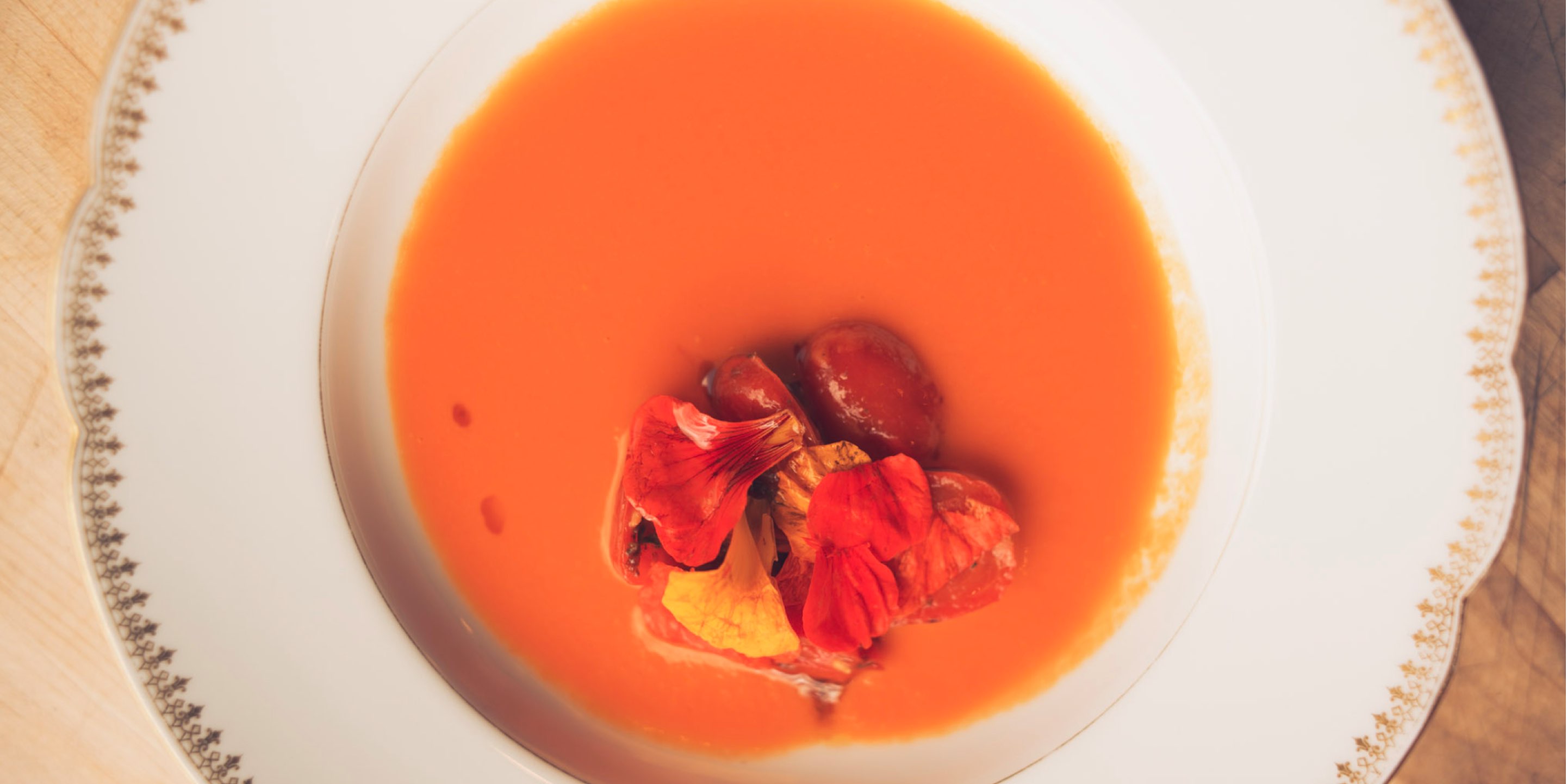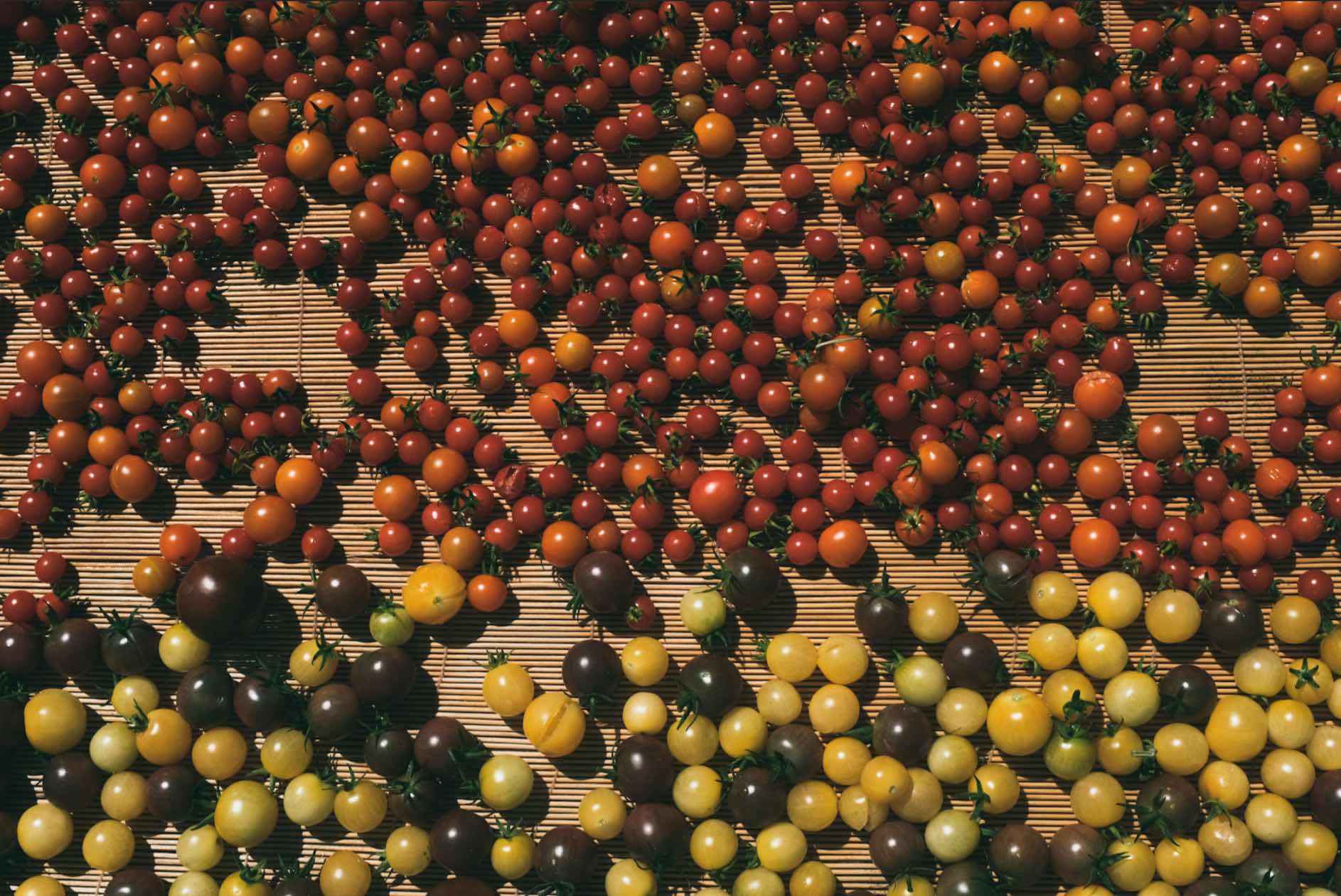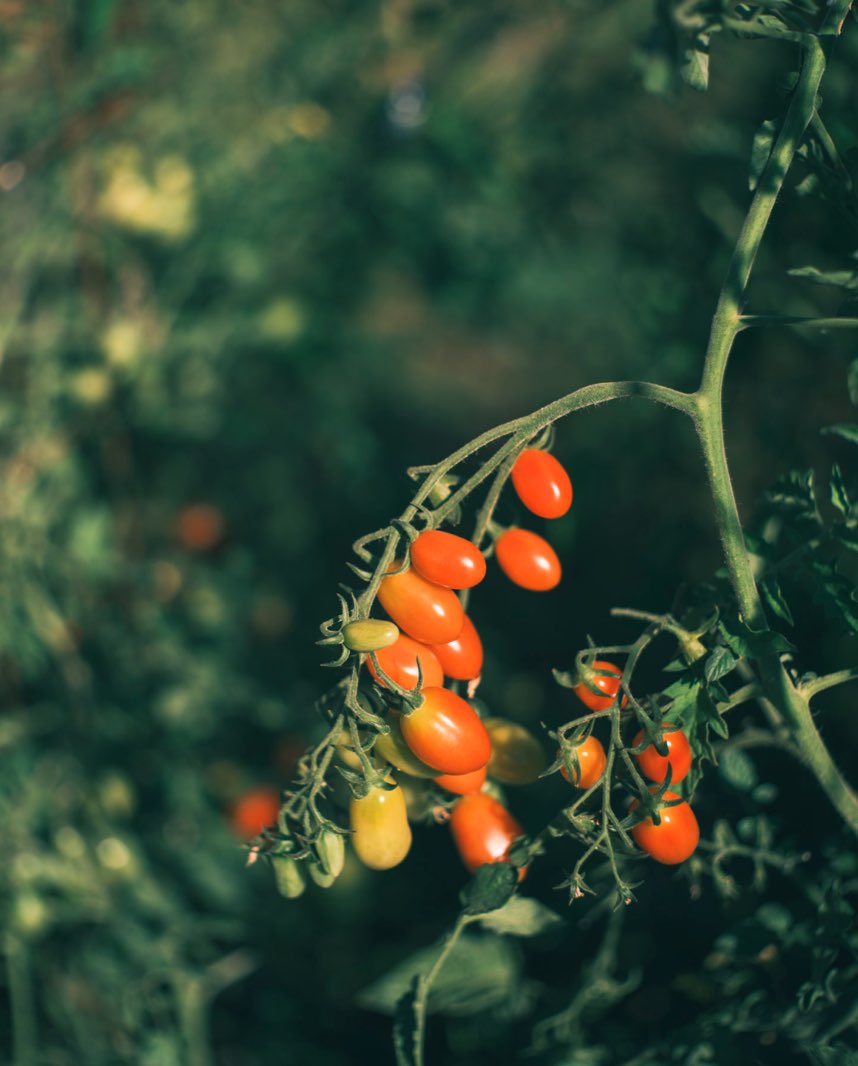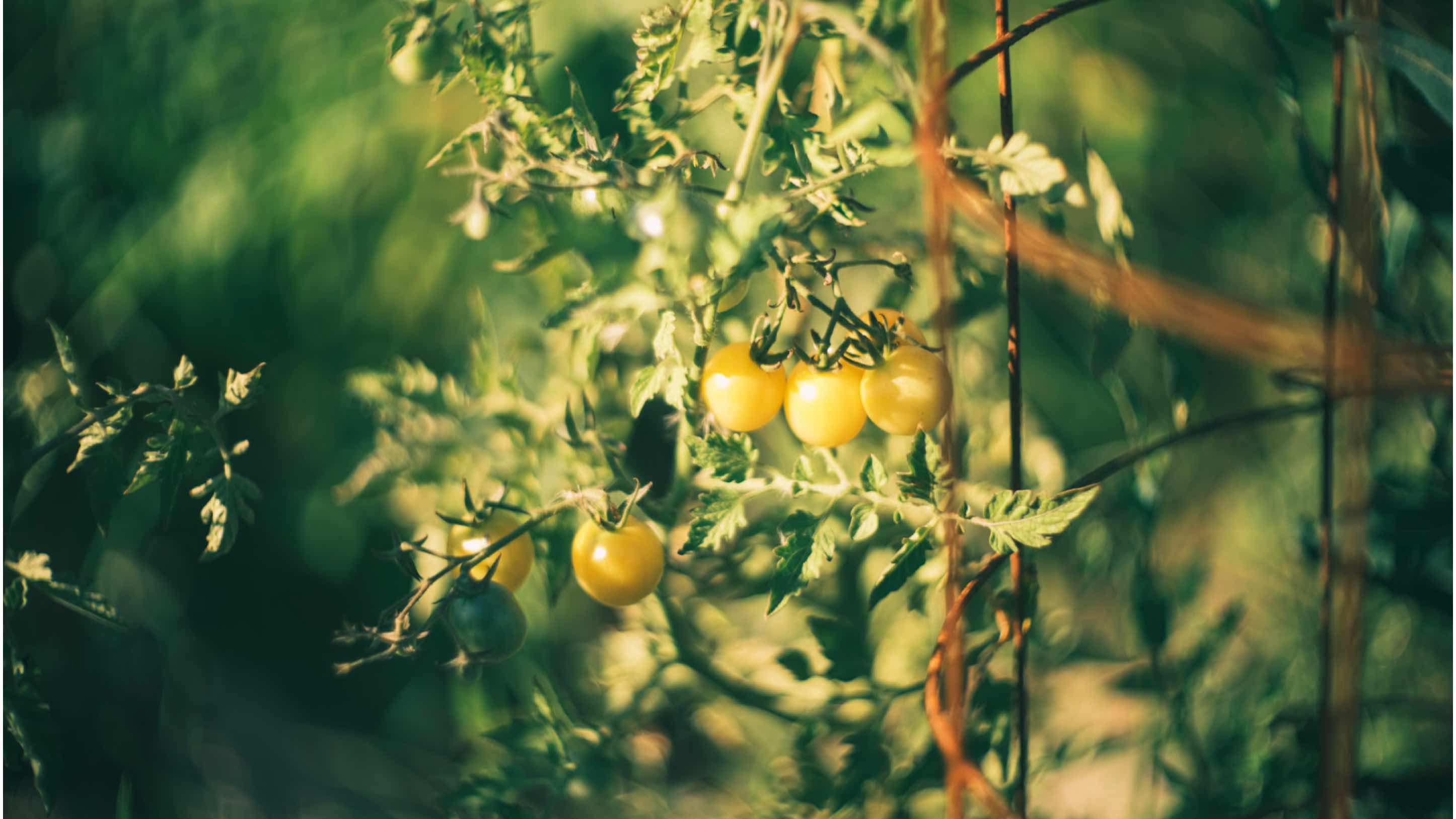


Tomato Conserva
(a la Alain Passard
at Hiyu)
with Jason Barwikowski
The first year I lived in Oregon, we were getting the most beautiful, big sweet tomatoes in November, because it was so mild. You didn’t even really start to get tomatoes or peppers until September or October, but with this year’s hot weather we already had cherry and Principe Borghese tomatoes in early August. Their arrival intersected for a brief moment with an abundance of flowering lavender and summer savory in its full glory, soft and sweet on the stem. The combination of these three ingredients brought together with a bit of heat, salt, and olive oil is rather a dreamy one.


When making Tomato Conserva, you can use nearly any tomato variety (even the Roma variety commonly found in grocery stores), but some are better suited than others. At Hiyu we grow both Cuore di Bue and Principe Borghese tomatoes, which absolutely shine in this application. The first is a large beef-sized, heart-shaped tomato with very dense flesh and very little liquid, whereas the second is small and dry with very few seeds.

Principe Borghese tomatoes in the Hiyu garden.


Smoked eggplant, zucchini caponata, tomato conserva served in the Tavern.

No matter which variety you use, start by selecting just ripe tomatoes. Wash and dry them, then cut them into chunks, wedges, or what have you: uniform size is critical, but not uniform shape. Gather about 12 or so sprigs of lavender flowers and the same of summer savory. Thyme also works well, as does oregano. Set the sprigs aside for the moment.
Pour the slightest amount of good olive oil into a non-reactive, heavy-bottomed pan that’s just big enough to accommodate the cut tomatoes. Use just enough olive oil to barely coat the bottom. Lay the tomatoes in the pan, with a bit of space between them (they shouldn’t be piled up). Distribute the flowers and the herbs among the tomatoes, poking some down here and there within the pieces.
Place the pot over a low flame and cover it with a parchment cloche, at the very least, or a fitted lid set slightly ajar. You want to allow some steam to escape, but not all of it. The tomatoes will begin to release their liquid, gently cooking the fruit and infusing it with the aromatics. Keep an occasional eye (and nose) on their cooking; it’s a fairly slow process. Adjust the heat as needed to slow down the cook, or to speed it up. The liquid should all but evaporate, which can take about an hour, and the tomatoes should be cooked but not falling apart. When that moment has arrived, remove the lid and season with some flaked sea salt. When the mixture is completely cooled, liberally dress it with more good olive and reserve the conserva until ready to eat. It is great straight away, but better the next day.




We’ve been pairing our conserva with eggplant, zucchini, and squash — beautiful varieties that China has been cultivating — to make our version of Caponata and a deconstructed-reconstructed Baba Ganoush, layering zucchini and capers and raisins and onions and all that over eggplant, then topping it with the conserva and breadcrumbs.
I’ve also been using a similar slow-cook technique to make our version of Piperrada, which is a Basque dish featuring peppers. In Spain it’s usually exclusively made with Espelette peppers, but we’ve just gotten our first harvest of all the different peppers, including Corno di Toro and sweet red Jimmy Nardello peppers, which I mix with our dried and ground Espelettes. I use just enough olive oil (and no other liquid) to start the peppers stewing and keep them from sticking to the bottom of the pan. The crux is to have the pepper juices and olive oil emulsify as the dish develops, lending a silky, creamy texture to the pot. You can serve Piperrada at room temperature with so many things. For example, shell beans, which you boil (barely) with aromatics to make Beans and Broth with Piperrada. If you want to make it really special, add aioli.


Tales



